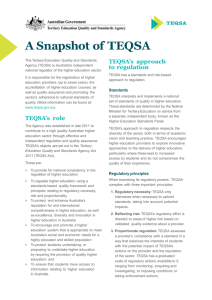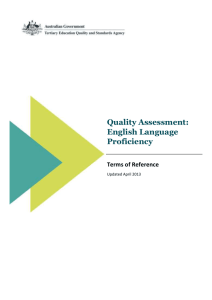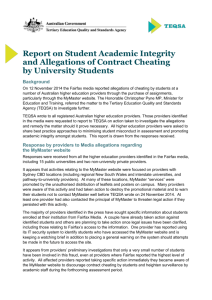TEQSA Standards Transition Project: Guiding Principles
advertisement
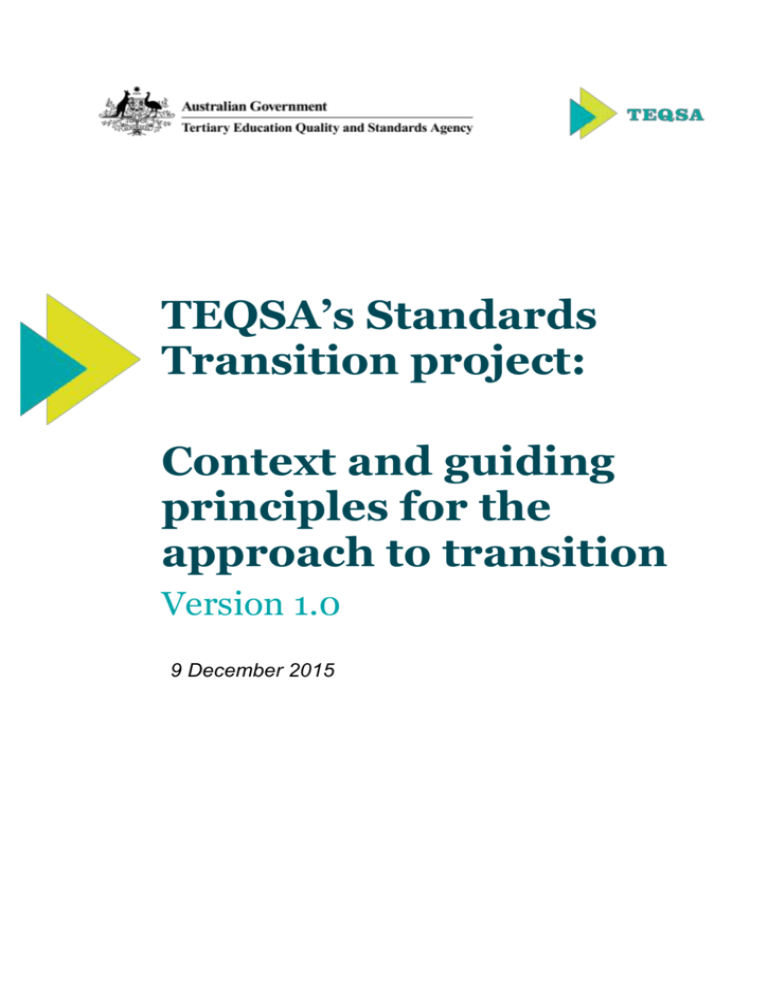
TEQSA’s Standards Transition project: Context and guiding principles for the approach to transition Version 1.0 9 December 2015 Overview The Higher Education Standards Framework (Threshold Standards) 2015 will come into force on 1 January 2017. This document describes the context and the guiding principles underpinning TEQSA’s approach to transitioning to this framework. Context Per the Explanatory Statement for the Threshold Standards 2015: The Higher Education Standards Framework (Threshold Standards) 2015 (the Standards) sets out the requirements that a higher education provider must meet – and continue to meet – in order to be registered by the Tertiary Education Quality and Standards Agency (TEQSA) to operate in Australia as a provider of higher education. The Standards provide the basis for the regulation of registered higher education providers by TEQSA. The Standards are grounded in the core characteristics of the provision of higher education. In consequence, they are intended to be useful to higher education providers as a framework for internal monitoring of the quality of their higher education activities. The Standards encompass the matters that a higher education provider would ordinarily be expected to address in the course of understanding and monitoring its higher education activities and managing any associated risks. The Standards ensure that the barrier to entry into the higher education sector is set sufficiently high to underpin and protect the quality and reputation of the sector as a whole. They also establish a baseline for operational quality and integrity from which all providers can continue to build excellence and diversity. The Standards also serve other broader purposes including: an articulation of the expectations for provision of higher education in Australia as: - a guide to the quality of educational experiences that students should expect - a reference for international comparisons - a reference for other interested parties, and a model framework which higher education providers can themselves apply for the internal monitoring, quality assurance and quality improvement of their higher education activities. Approximately half of the revised Standards are the result of re-writing or editing the existing standards. Around a quarter result from aligning the Standards with the requirements of the National Code of Practice for Providers of Education and Training to Overseas Students. The remainder are new, covering the previously mooted but undefined standards relating to learning, teaching, research and information management. The revised standards framework has been developed in accordance with the principles set out in the Australian Government Guide to Regulation. It takes account of the Objects of the TEQSA Act, and has been designed to facilitate TEQSA’s compliance with the three Basic Principles for Regulation articulated in the TEQSA Act:: the principle of regulatory necessity the principle of reflecting risk, and 1 the principle of proportionate regulation. The revised framework has been structured to align with the student life cycle. This is expected to make the various standards easier to apply for the purposes of providers’ own internal monitoring, reporting and governance activities, as well as for TEQSA’s regulatory processes. As a result, it is expected that TEQSA will more readily be able to use internal reports and information produced during the normal course of providers’ business, or published on provider websites, as evidence when assessing compliance with the Standards. In turn, this will see a reduction, over time, in the red tape burden on higher education providers that is attributable to TEQSA’s administration of the Standards. Guiding principles of the transition approach 1. To support the transition to the Threshold Standards 2015, TEQSA will: establish an external Standards Transition Reference group to provide advice on transition matters, and an internal Standards Interpretation Panel to address specific questions from providers hold Provider Briefing sessions in 2016 for providers to discuss implementation of the new Standards through the Case Management model, tailor support to providers with applications due in late 2016 and early 2017 adapt its Risk Assessment Framework, sector guidance notes, application guides and application forms for registration, re-registration, course accreditation and re-accreditation to align with the Threshold Standards 2015 provide additional support materials (e.g., Frequently Asked Questions) on its website 2. In order to expedite provision of application forms, guides and guidance notes for use by the sector, TEQSA will : adopt a minimal change approach to aligning existing application forms, guides and guidance notes to the new standards adopt a staged approach to publish the most critical materials first. After internal quality assurance and review as appropriate, these ‘beta’ versions will be made available for use by providers. Version control will be used to manage subsequent iterations of the application forms, guides and guidance notes. 3. The internal Standards Interpretation Panel will be used to formulate specific, consistent responses to provider questions, establish precedents and produce relevant guidance (for example, updates to beta materials and Frequently Asked Questions). 4. TEQSA will continue to minimise regulatory burden in applying the Framework by applying the basic principles for regulation set out in the TEQSA Act. 5. Wherever practicable (and except for applications for initial registration) , TEQSA will structure the new application forms to leverage the evidence generated by a provider’s internal quality assurance systems in the normal course of internal monitoring and/or information in the public domain, in preference to requesting information generated solely for external regulatory purposes. 2
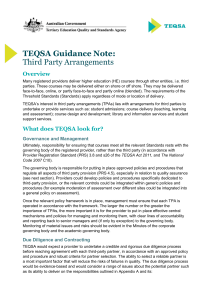
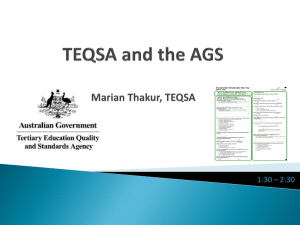
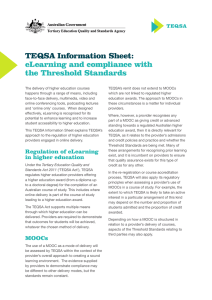
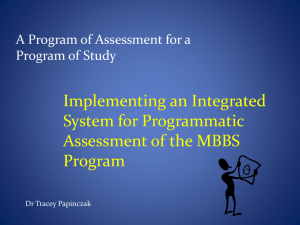
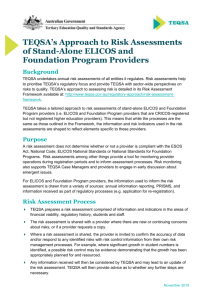
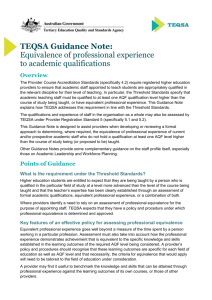
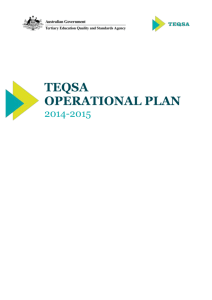
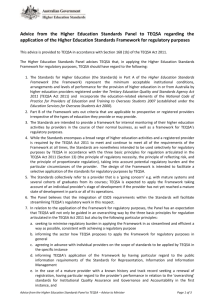
![Policy for public reporting of regulatory decisions [DOCX 1.4MB, 4 pg]](http://s3.studylib.net/store/data/006931699_2-8d1b75d461de233326f03f37bd00f391-300x300.png)
